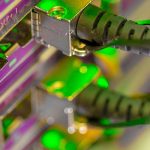The field of Software Asset Management (SAM) has seen significant advancements, transitioning from basic record-keeping to more sophisticated license and contract management integrated with cutting-edge technologies like artificial intelligence (AI), machine learning (ML), and generative AI (GenAI).
Effective SAM implementations offer benefits such as reducing license costs, enhancing compliance, and minimizing true-ups. They also optimize software utilization, enabling companies to maximize their investments, remove obsolete applications, and enhance supplier relationships through improved contract management. While SAM practices and tools have been around for a while, they continue to play a crucial role in the software acquisition process.
Today, SAM processes are not just used for audits or contract renewals, but also for overall cost management and tech optimization. Challenges in SAM complexity include the need for subject matter experts and potential resource constraints.
The landscape of software asset management is changing, with a shift towards usage management, security, contract risk management, and cost optimization. SAM tools are now utilized for supplier management, optimizing software usage costs, and reducing the risk of costly true-up payments.
As technology environments grow more complex, integrating AI and automation becomes vital for bolstering operational efficiency, reducing manual tasks, and minimizing risks and costs. GenAI and machine learning capabilities are being actively developed by suppliers to enhance SAM practices further.
In conclusion, SAM is evolving to meet the changing demands of the IT industry, leveraging advanced technologies to improve asset management processes and drive better business outcomes.






